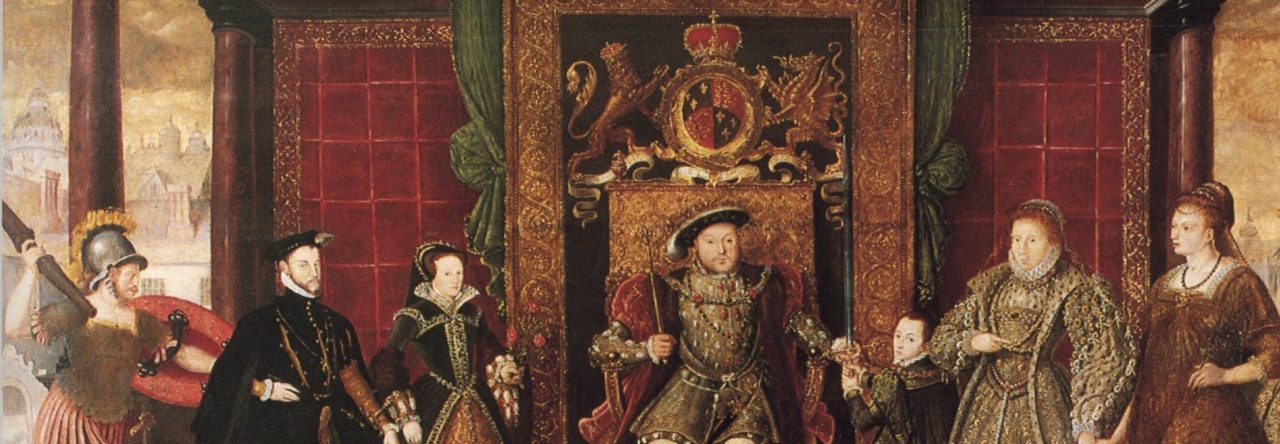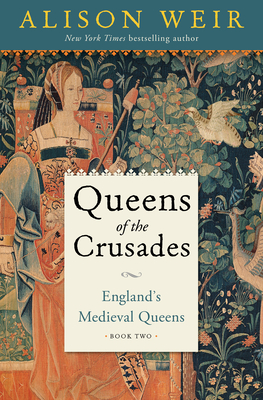 When we think of the title “medieval queen,” a few things come to mind. They were seen as mere trophy wives who were only suitable for making alliances and giving birth to children. It may be a cruel assessment for a modern audience, but that was the reality of the medieval world. However, the late Plantagenet queens decided to step outside the socially acceptable path for their lives and forged a new one. In Alison Weir’s latest nonfiction book, “Queens of the Age of Chivalry: England’s Medieval Queens,” she explores the lives of five Plantagenet queens who had to adapt quickly to the ever-changing world of late medieval England.
When we think of the title “medieval queen,” a few things come to mind. They were seen as mere trophy wives who were only suitable for making alliances and giving birth to children. It may be a cruel assessment for a modern audience, but that was the reality of the medieval world. However, the late Plantagenet queens decided to step outside the socially acceptable path for their lives and forged a new one. In Alison Weir’s latest nonfiction book, “Queens of the Age of Chivalry: England’s Medieval Queens,” she explores the lives of five Plantagenet queens who had to adapt quickly to the ever-changing world of late medieval England.
Thank you, Ballantine Books and Net Galley, for sending me a copy of this book. I have read and enjoyed the previous books in England’s Medieval Queens series, and I wanted to see which queens would be included in this book.
The years covered in this book are 1299-1399, a time of turmoil, change, and the plague. During that time, five queens forever left their marks on England: Marguerite of France, Isabella of France, Philippa of Hainault, Anne of Bohemia, and Isabella of Valois. Their royal husbands were Edward I, Edward II, Edward III, and Richard II. Since these queens were foreign brides, it was a balancing act between what their home country expected of them and what England expected their new queen to do, which was, in most cases, to give birth to heirs and to stay out of politics.
We begin with Marguerite of France, who was the second wife of Edward I and the step-mother of Edward II; her most extraordinary claim to fame was to try and prevent her son from ever seeing Piers Gaveston, which sadly did not last long. Isabella of France had to deal with Edward II’s favoritism to not only Piers Gaveston but to Hugh Despenser the Younger. This led her to join Roger Mortimer and rebel against her husband. This decision would create a black cloud around her reputation for centuries.
As part of the rebellion, Edward III married Philippa of Hainault, who was the closest of these five queens to be the ideal medieval queen. She gave Edward III many heirs that would help define future generations. Richard II’s first wife, Anne of Bohemia, was the essence of sophistication, but her death sent him reeling, forcing him to take a child bride named Isabella of Valois.
Being a queen in the late medieval period was not easy, especially with the Black Death, the Hundred Years’ War, the Peasants’ Revolt, and internal struggles were constantly in play, but the five queens mentioned in this book were able to navigate this tumultuous time to create their legacies. Weir once again weaves fun facts and compelling tales of each queen to give her readers her perspective on their true legacies. If you have enjoyed the previous books in “England’s Medieval Queens” series, I would highly recommend you read “Queens of the Age of Chivalry: England’s Medieval Queens” by Alison Weir.

 One of the most prominent royal families of English history was the Plantagenets, who reigned for over three hundred years. In the first one hundred years of this family’s infamous history, five kings ruled (the first two are considered kings of the Angevin dynasty): Henry II, Richard I, John, Henry III, and Edward I. These five kings saw England change drastically, but they also participated in the international political landscape of the day, which involved the series of wars that today we simply refer to as the Crusades. The early Plantagenet kings saw much bloodshed and war, but they were not alone in their struggle to keep the dynasty going. These men would not have gotten as far as they did without their wives who stood by their sides. In Alison Weir’s latest installment of England’s Medieval Queens series, “Queens of the Crusades”, she takes a deep dive into the lives of the first five Plantagenet queens to show how remarkable these women truly were to stand beside their husbands during the times of the Crusades in Europe.
One of the most prominent royal families of English history was the Plantagenets, who reigned for over three hundred years. In the first one hundred years of this family’s infamous history, five kings ruled (the first two are considered kings of the Angevin dynasty): Henry II, Richard I, John, Henry III, and Edward I. These five kings saw England change drastically, but they also participated in the international political landscape of the day, which involved the series of wars that today we simply refer to as the Crusades. The early Plantagenet kings saw much bloodshed and war, but they were not alone in their struggle to keep the dynasty going. These men would not have gotten as far as they did without their wives who stood by their sides. In Alison Weir’s latest installment of England’s Medieval Queens series, “Queens of the Crusades”, she takes a deep dive into the lives of the first five Plantagenet queens to show how remarkable these women truly were to stand beside their husbands during the times of the Crusades in Europe.